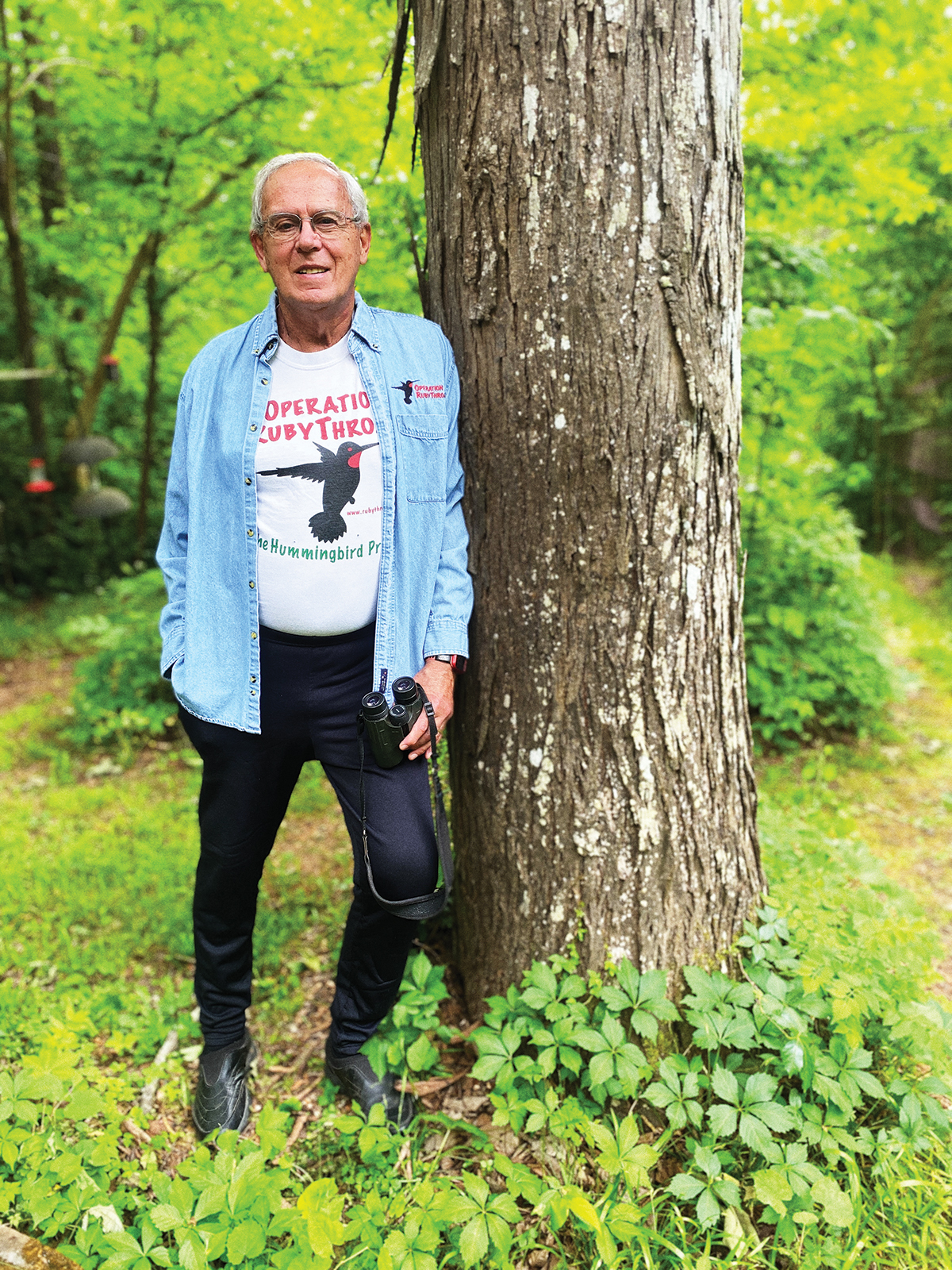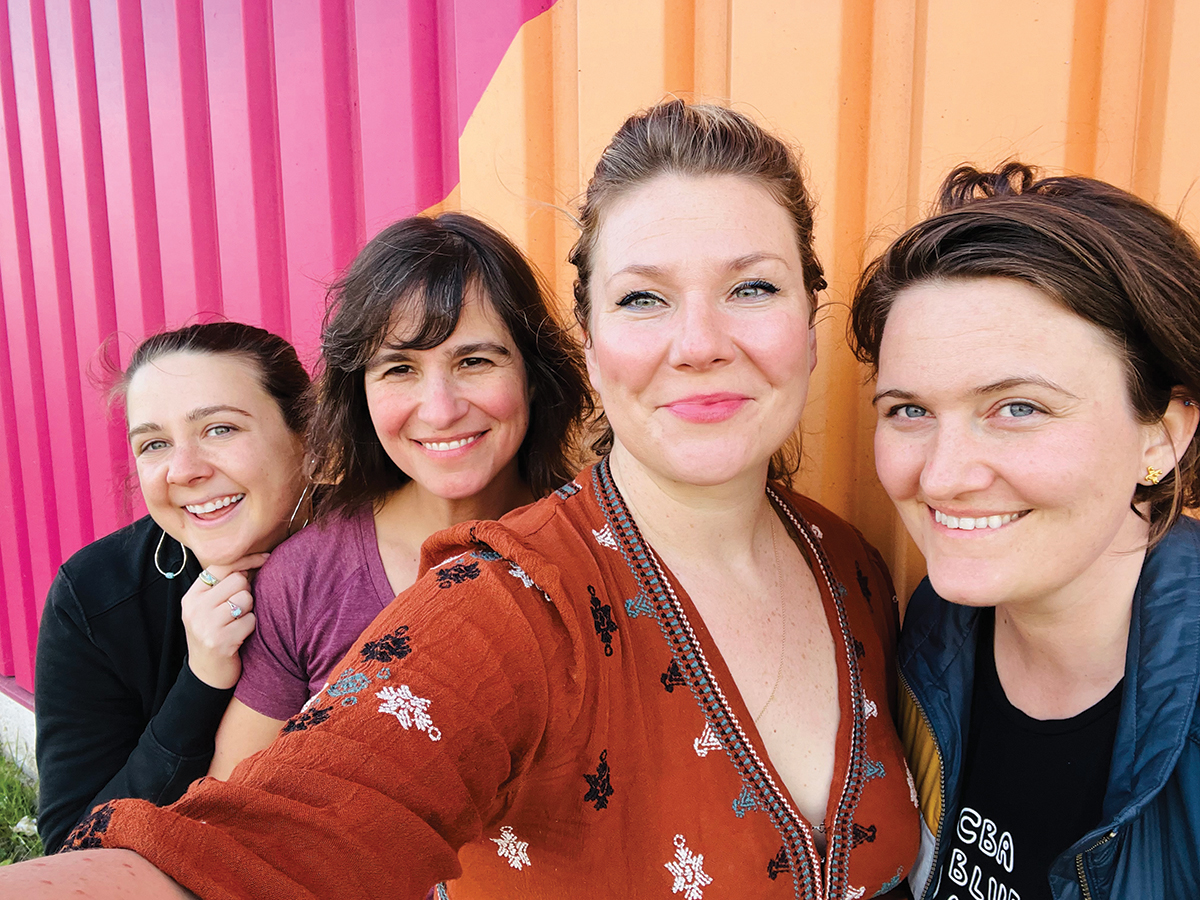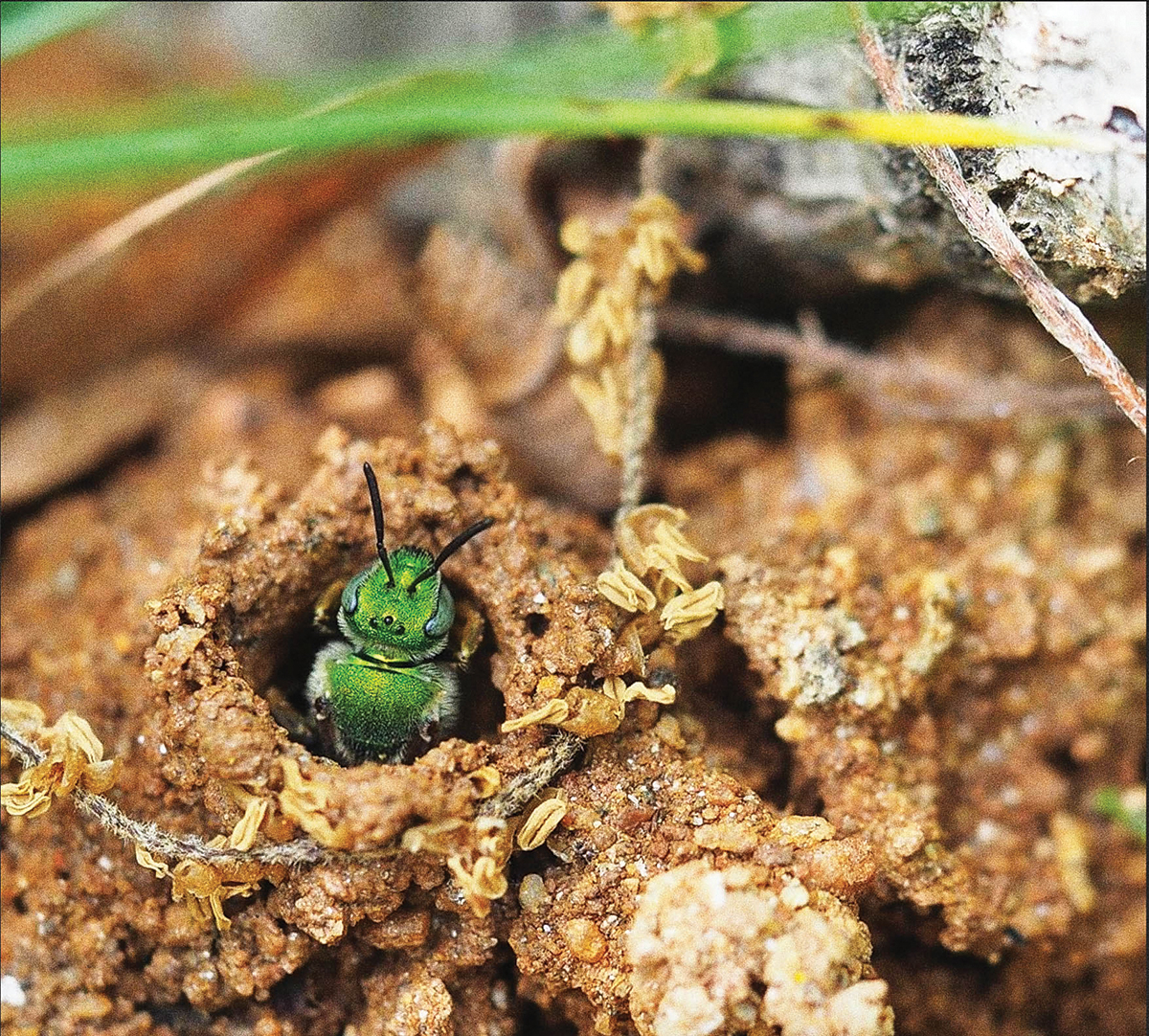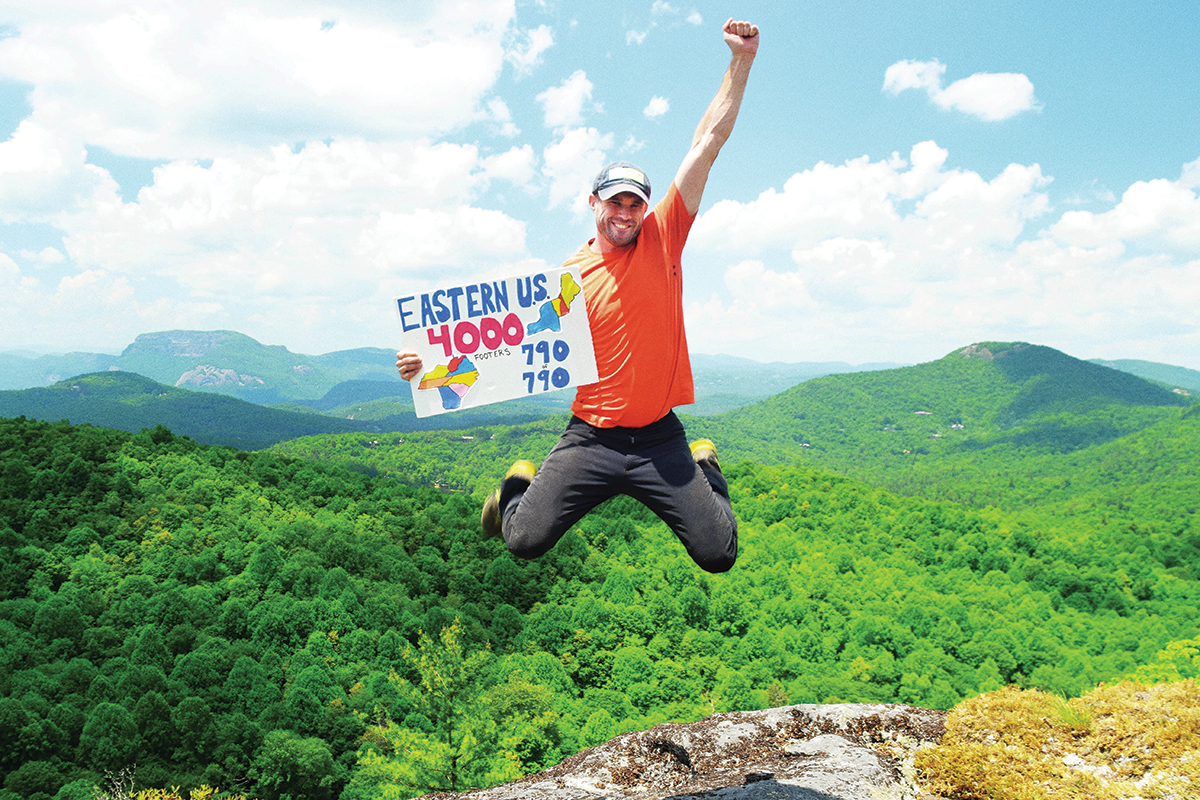By: Lee Stevens
Talk highlights the incredible journey of the ruby-throated hummingbird

Bill Hilton is one of only a few scientists allowed to “band” hummingbirds.
Photo by Susan B. Hilton
Dr. Bill Hilton, Jr. defines himself an educator-naturalist. The time he devotes to observing, photographing, studying, and writing about birds and other aspects of nature allows him to do what he loves best every day. Based near York, South Carolina, at Hilton Pond Center for Piedmont Natural History — a research, education, and conservation organization he founded on family property in 1982 — Hilton has garnered worldwide acclaim for his work as a teacher, researcher, and environmental steward. He will speak about hummingbirds on June 18 as part of Conserving Carolina’s Speaker Series at local Walnut Creek Preserve.
What was your vision when you established the Hilton Pond Center in 1982?
I wanted to use the land as a laboratory for my work as a teacher. I allowed my 11 acres to revert to a natural state, so I was able to not only teach students about vegetational succession, but also to document the evolution of plant communities over time and demonstrate the value of natural landscapes. In addition, I studied bluejays in graduate school and learned bird banding [tagging for identification] — I wanted to use this skill as a teaching tool.
What are your typical daily activities at the Center?
I catch and band birds using mist nets in order to track migration, longevity, population dynamics, and site fidelity among bird populations over time on my land. I also take pictures of birds and the natural world at the Center, and write notes for my weekly photo essay, This Week at Hilton Pond. Guided field trips for school and adult groups, which were suspended due to COVID, will resume this fall.
You have banded more than 75,000 birds in 41 years and are one of about 75 people who actively band hummingbirds. Is there a limit on the number of people allowed to band hummingbirds?
There is an art and science to bird banding, and with hummingbirds it’s on a micro level. I had to go through a training course and have a project in mind in order to become authorized to band hummingbirds.
What duties do Citizen Scientists perform?
In Central America, they are field helpers — they help set up mist nets and extract birds if they are trained to do so. Back in the States, they collect observational data and report on what they see.
In what ways do hummingbirds break all the rules?
They fly upside down and backwards, they feed and catch insects by hovering, and, despite their tiny size, they fly to Central America and return to the same backyard or patch of woods each year.
What can people do in their yards to help hummingbirds thrive?
The biggest danger to hummingbirds is loss of habitat, so people can let their yards grow naturally and plant native plants such as the trumpet creeper, bee balm, or trumpet honeysuckle.
Dr. Bill Hilton, Jr. will present “Hummingbirds — From Your Yard to Central America … and Back!” at 10:30am-12pm on Saturday, June 18, at the Anne Elizabeth Suratt Nature Center at Walnut Creek Preserve (179 Wood Thrush Lane in Mill Spring). The presentation is free, but participants are limited to 50 and preregistration is required. For more information, see the event on conservingcarolina.org. (For more information about Hilton Pond Center, visit hiltonpond.org)



